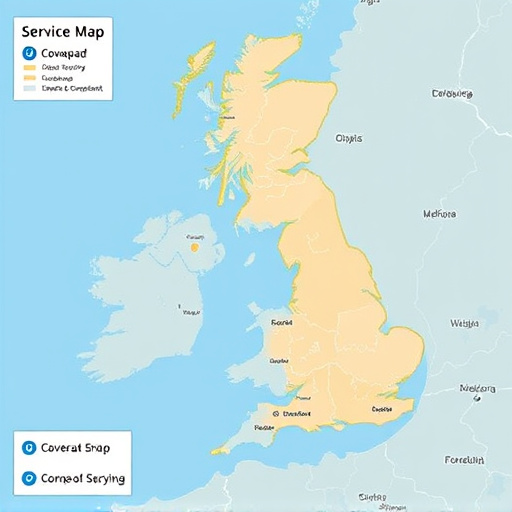DTF (Direct-to-Film) Transfer technology revolutionizes printing with its ability to reproduce intricate designs and fine lines precisely. This process involves software-prepared graphic designs transferred to a transparent film, acting as a stencil for accurate ink application. DTF's key advantage lies in maintaining clarity in thin lines and small details, making it ideal for detail-oriented projects across fashion, textiles, signage, and decorative arts. High-quality DTF prints are achieved through optimal material selection based on fabric type, desired resolution, and line thickness, as well as printer capabilities. Mastering print settings and calibration ensures consistency and flawless results, while DTF transfers have transformed industries like architecture, construction, automotive, and product design by enabling precise reproduction of complex blueprints and textures.
“Unleash the power of precise reproduction with DTF (Direct-to-Film) transfers. This technology has revolutionized detail-oriented projects by enabling accurate replication of thin lines and intricate designs. In this comprehensive guide, we’ll explore the intricacies of DTF transfer technology, from its advantages for detailed prints to choosing the ideal materials and mastering print settings. Learn how to navigate common challenges and discover real-world applications where DTF prints excel in reproducing fine lines, ensuring exceptional quality.”
- Understanding DTF Transfer Technology: A Beginner's Guide
- The Advantages of DTF Printing for Detail-Oriented Projects
- Choosing the Right DTF Material: Factors to Consider
- Mastering the Art of DTF Print Settings and Calibration
- Common Challenges in DTF Transfers and How to Overcome Them
- Real-World Applications: Where DTF Prints Excel in Reproduicing Thin Lines
Understanding DTF Transfer Technology: A Beginner's Guide

The DTF (Direct-to-Film) Transfer technology has revolutionized the way we reproduce intricate designs and fine lines in various industries, especially in printing. This innovative process allows for precise and detailed prints, making it a game-changer for creating DTF prints that capture every nuance of a design. By directly applying ink to a film or substrate, DTF transfers offer exceptional accuracy and clarity.
Beginners should understand that DTF Printing involves several steps. A graphic design is first prepared and then transferred onto a transparent film using specialized software. This film acts as a stencil, guiding the ink precisely during the printing process. The key advantage lies in its ability to reproduce thin lines and small details without blurring or smudging, ensuring high-quality DTF prints that meet professional standards.
The Advantages of DTF Printing for Detail-Oriented Projects

Detailing-oriented projects demand transfers that can accurately reproduce thin lines and intricate details—this is where DTF (Direct to Film) Printing shines. DTF Transfer technology offers numerous advantages for creating precise, high-resolution prints. One of its key strengths lies in its ability to capture even the tiniest linework and textures, ensuring every detail is faithfully transferred onto various materials.
Compared to traditional printing methods, DTF Printing enhances productivity and accuracy. It streamlines the production process, eliminating the need for complex set-up procedures. With DTF, designers can quickly create custom prints, making it an ideal solution for short runs or one-off projects. Moreover, DTF Transfers are versatile, suitable for a wide range of applications, from fashion and textiles to signage and decorative arts, allowing artists and creators to bring their vision to life with remarkable precision and efficiency.
Choosing the Right DTF Material: Factors to Consider

When selecting materials for DTF (Direct to Fabric) transfers, several factors come into play to ensure the reproduction of thin lines and intricate details. The choice of DTF material is a pivotal decision as it directly impacts the final print quality. One of the primary considerations is the fabric type; different fabrics have varying porosities and textures that can affect ink absorption and adhesion. For instance, smoother fabrics like polyester might demand finer mesh screens to capture delicate lines, while coarser fabrics such as cotton can tolerate slightly thicker lines due to better ink transfer.
Additionally, the color of the fabric plays a role; lighter colors may require transparent DTF films to avoid blocking out details, whereas darker fabrics could benefit from opaque materials for enhanced contrast. The desired print resolution and line thickness are also crucial determinants. For intricate designs with fine lines, higher mesh counts (e.g., 300-400 dpi) are preferable, ensuring crispness and precision. Conversely, bulkier prints with broader strokes might be suitable with lower mesh settings. Moreover, the DTF printer’s capabilities and the intended use of the final product should guide material selection to achieve the desired results in DTF printing.
Mastering the Art of DTF Print Settings and Calibration

Mastering the art of DTF (Direct to Film) print settings and calibration is paramount for achieving transfers that accurately reproduce thin lines and intricate details. It involves a delicate balance between printer settings, film selection, and environment control. Precise exposure times and resolution settings ensure that every line and shade is captured accurately on the film, translating to flawless prints. Calibration ensures consistency across batches, enabling you to replicate desired outcomes with reliability.
Regular calibration of your DTF printing setup is crucial. This includes adjusting factors like print head pressure, ink flow rates, and temperature settings. By maintaining these parameters, you minimize variations that can lead to imperfections in your DTF transfers. Ultimately, mastering print settings and calibration allows for the creation of high-quality, detailed DTF prints that meet the exacting standards required for applications demanding precision and clarity.
Common Challenges in DTF Transfers and How to Overcome Them

Transferring intricate designs with thin lines and fine details can be a challenging task for many print methods. Digital Thermal Transfer (DTF) printing, known for its precision and versatility, is no exception. Common hurdles include achieving sharp, consistent line quality and preserving delicate details during the transfer process.
To overcome these challenges, printers should focus on optimal setup and calibration. Using high-resolution images with clear lines and adjusting print parameters like temperature, pressure, and speed can significantly improve results. Additionally, choosing the right consumables, such as top-quality DTF films and heat presses, ensures a precise transfer. Regular maintenance of printing equipment and proper cleaning also contribute to consistent and accurate DTF prints, addressing common issues and delivering exceptional detail reproduction.
Real-World Applications: Where DTF Prints Excel in Reproduicing Thin Lines

In various industries, the ability to precisely reproduce thin lines and intricate details is paramount for achieving high-quality outputs. This is where DTF (Direct to Film) transfers excel. DTF Printing technology has revolutionized the way designs are transferred onto a wide range of surfaces, from textiles to plastics and metals. When it comes to showcasing delicate patterns or critical dimensions in engineering, DTF Prints offer unmatched precision.
In architecture and construction, for instance, DTF Transfers can accurately render complex blueprints and technical drawings. In the automotive sector, these transfers ensure precise replication of fine lines and details on car bodies and components. Similarly, in product design and manufacturing, DTF Printing facilitates the production of prototypes with intricate patterns and textures, allowing designers to showcase their vision clearly.














